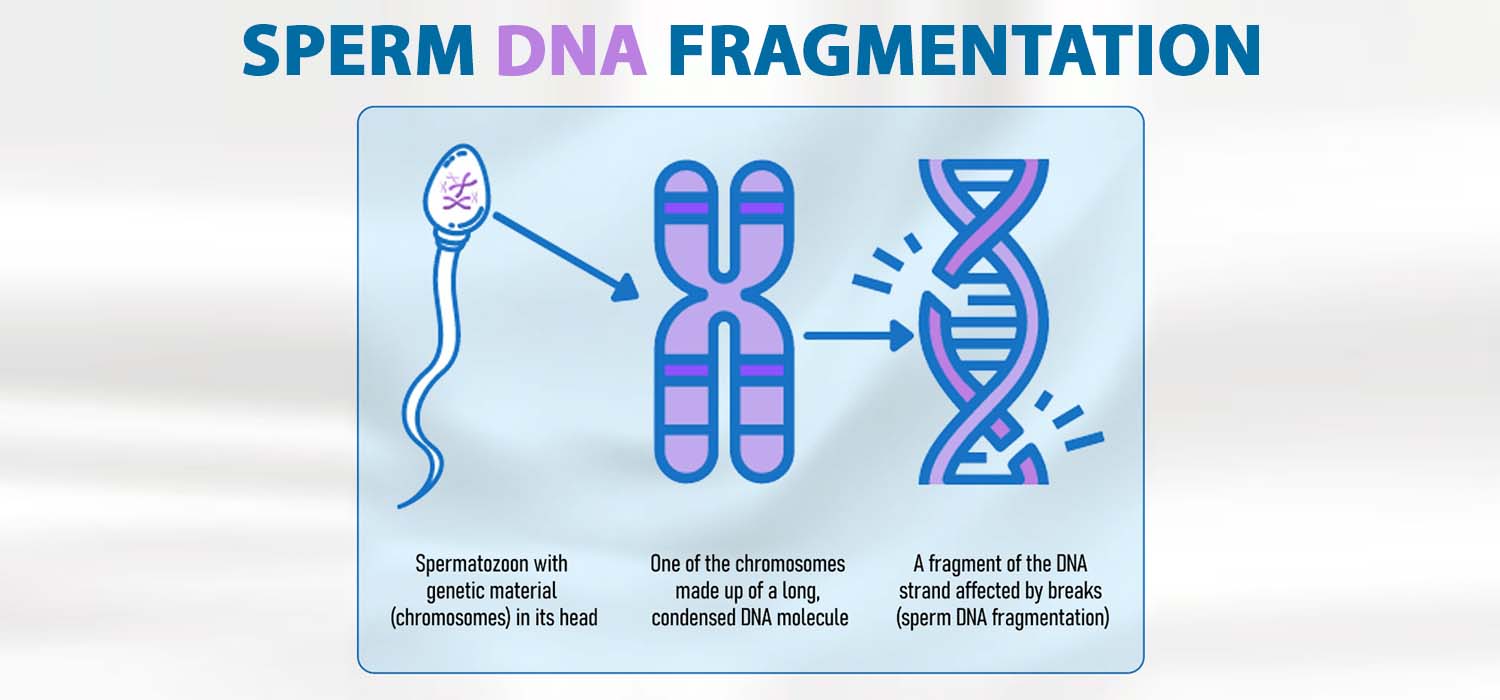Sperm Chromatin Assessment
The nuclear material (Chromosomes/ Chromatin) in the spermatid is condensed and housed in the sperm head of a mature spermatozoa. 85% of the DNA is stored as DNA-Protamine complex and the rest is with Histone. This change from histone to protamine ensures condensation of the chromatin as protamines are more compact and 50% the size of histone. The structure changes from solenoid to toroid. As the sperm passes through the epididymis, the protamines get cross linked with disulphide bonds and the volumes further reduces to one fifth. All these changes occur to protect the DNA structure. Post-fertilization, the chromatin decondenses.
DNA breakages causes abnormal sperm DNA and contributes to infertility. Damage can be caused by protamine deficiency, oxidative stress, improper handling and storage, delayed testing, medications, and infections.
What is sperm DNA damage?
Sperm DNA damage is the term for any damage to the structure of sperm DNA. SDF (Sperm DNA fragmentation) is the most common defect that disrupts the genetic material, and it can occur as single or double stranded DNA breakage.
What is the clinical significance of DNA damage?
Sperm DNA damage can cause reduced fertility and reduced time to pregnancy. It is a predictor of outcomes in IVF/ ICSI and also associated with increased pregnancy loss after IVF/ ICSI. The threshold for DNA fragmentation value proposed by Evenson, establishes that the possibility of pregnancy is near to zero if the DFI exceeds 30%.
What are the indications for sperm DNA assessment?
Sperm chromatin assays are not routinely indicated in infertility evaluation. They can be offered to couple with recurrent implantation failure, recurrent pregnancy loss, recurrent IUI failure, unexplained infertility and for prognostic counselling in couple undergoing IVF/ICSI.
What are the various sperm DNA tests, their principles and significance?
| Test | Principle | Interpretation | |
|---|---|---|---|
| 1 | SCSA (Sperm Chromatin structure assay) | Abnormal sperm chromatin has greater susceptibility to physical induction of partial denaturation in situ SCSA Acid/ heat depending on the denaturating agent used. |
|
| 2 | TUNEL assay (Terminal dUTP nick end labelling) | DNA ends tagged by labelled nucleotides, and these are detected by fluorochrome antibodies. Fluorescent sperms determined by flow cytometry. At lease 200 sperms to be screened |
|
| 3 | Comet assay | Assess alkaline denaturation & differential migration of broken DNA strands in an electric field | Comet like appearance. DNA without break accumulates at the head of comet and length of tail determines the extent of damage |
| 4 | Sperm chromatin dispersion | Determines break in di-sulphide cross links |
|
| 5 | Acridine orange test | The fluorescence with acridine orange is green for Double stranded DNA and red for single stranded or fragmented DNA | Recent methodology |
| 6 | FISH | High Ph induced DNA denaturation, extraction, extraction of protein and further studied |
|
| 7 | In Situ Nick Translation test (ISNT) | Similar to TUNEL assay | Quantifies DNA damage. |
| 8 | Toluidine blue test | With Histone Toluidine give a s violet-bluish colour but with protamines gives pale blue colour |
|
| 9 | CMA3 (Chromomycin A3) | Chromomycin competes with protamines and anchors to GC region (Guanine/ cytosine) |
|
What are the main drawbacks of sperm DNA testing?
There are no Randomized Controlled trials for the tests., Also there exist different types of tests with different cut-offs.
What is the recommendation for sperm DNA fragmentation testing currently?
The ASR-AUA guidelines of 2020 opines:
- 1) Sperm DNA fragmentation testing is not indicated in the initial evaluation of the couple or in the initial evaluation of the infertile male partner.
- 2) Though available studies suggest that high DNA fragmentation correlates negatively with pregnancy and positively with miscarriage, the study methodologies and tests were variable. Hence for couple with high DNA fragmentation, counselling about possible association with infertility and compromised outcome after ART can be done.
- 3) ICSI with surgically obtained sperms may be offered for men with increased sperm fragmentation
To conclude,
Sperm chromatin assessment can only complement the routine semen testing but is not recommended for routine use in all patients. With the current knowledge and availability of cheap, commercial kits, DNA fragmentation can be offered to select group of infertile men.
For more info, Visit : www.medlineacademics.com
